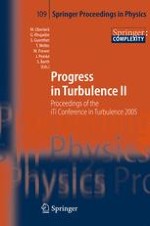Besides turbulence there is hardly any other scientific topic which has been considered as a prominent scientific challenge for such a long time. The special interest in turbulence is not only based on it being a difficult scientific problem but also on its meaning in the technical world and our daily life. This carefully edited book comprises recent basic research as well as research related to the applications of turbulence. Therefore, both leading engineers and physicists working in the field of turbulence were invited to the iTi Conference on Turbulence held in Bad Zwischenahn, Gemany 25th - 28th of September 2005. Discussed topics include, for example, scaling laws and intermittency, thermal convection, boundary layers at large Reynolds numbers, isotropic turbulence, stochastic processes, passive and active scalars, coherent structures, numerical simulations, and related subjects.
